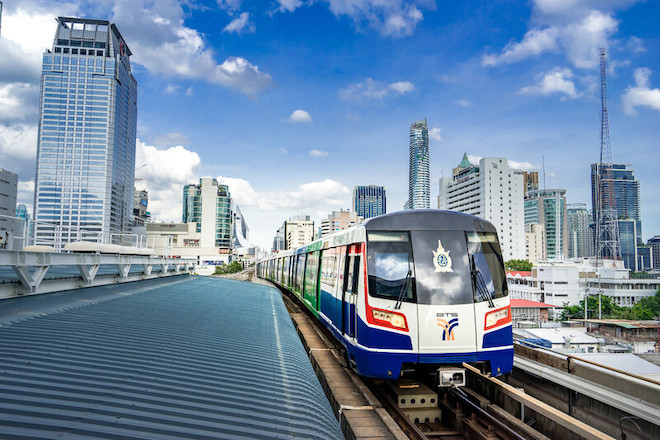
This article is published in collaboration with Arup.
Asia is one of the most vulnerable to climate change impacts due to its densely populated coastal cities, extreme event-prone cities, and low-lying inhabited islands. The increased intensity and frequency of extreme heat, weather disasters, and rise in sea-levels often result in massive floods, landslides, and droughts, impacting the lives of millions, especially the urban poor.
Action is needed, urgently, systematically, at scale and at pace. Prior to COP27, Arup organized a series of Race to Resilience events, online and in person across Ho Chi Minh City; Hong Kong, China; Jakarta; Kuala Lumpur; Manila; and Singapore.
Renowned speakers from across industries and sectors looked into topics ranging from flood management to inclusive design and transport strategies, shared their insights, experiences, and what they think is most needed to work toward a climate resilient Asia.
Here are some key takeaways:
Cities are at the forefront
While themes and context per event varied, the overall message is clear: both the challenges and solutions to climate mitigation and adaptation lie within our cities. And it is by bringing diverse stakeholders together to share their experiences and approaches to local action, celebrate successes, and identify what is needed to empower local and regional state and non-state actors that we are able to create greener, more equitable, resilient, and above all, more livable cities now and in the future.
Nature-based solutions are critical to build resilience
Nature-based solutions are critical in improving sponginess and enhance the ability of cities to manage water and floods to build resilience. The discussion in Ho Chi Minh City focused on how the design and combination of blue, green, and gray infrastructure can achieve this, while positively contributing to biodiversity, absorb carbon emissions, and improve the health and well-being of citizens. Water sensitive urban design, integrated flood control planning, and decentralized infrastructure and utilization of digital tools are all key components of future water strategies.
Adopting a progressive adaptive approach
From the discussion in Hong Kong, China we learned that adopting a progressive adaptive approach is essential to ensure short- to mid-term flood resilience, while keeping design flexibility to be able to address uncertain worst case long-term climate change scenarios with future, possibly more extensive interventions. This ensures cost-effectiveness and limits future impacts to coastal structures. This approach should be complemented with strategies such as the delineation of areas where temporal flooding is acceptable and the application of smart and flexible flooding barriers.
Participatory low-carbon design
In cities like Jakarta, rapid urbanization sets to intensify challenges such as a widening rich–poor divide, disaster risk and pollution. Participatory low-carbon design and planning approaches should be used to uncover opportunities and concrete actions in enhancing access to services, employment, and education for equitable economic growth. Only through direct engagement with vulnerable groups, an understanding can be obtained on the needs and challenges that must be addressed.
Nurturing sustainable transport strategies
Transport is key to cater for thriving cities while accommodating rapid urbanization. However, it is also a major contributor to carbon emissions and pollution, especially through people’s dependence on private cars. In Kuala Lumpur the discussion focused on how sustainable means of transport, ranging from trains to bikes, should be further enhanced through the use of innovative solutions such as digital tools and Mobility-as-a-Service concept.
Hydrogen, the resilient energy carrier
Singapore’s session on hydrogen provided insights on how hydrogen is not only a viable, yet also a resilient energy carrier that will play a vital role in the decarbonization of multiple industries and achieving net zero economies. Preparing for the widespread use of hydrogen is an immense systems integration challenge, requiring partnerships across the entire value chain. Challenges such as what is the most optimal form and which sector should be decarbonized first at scale, need to be addressed. Investors will only commit to large-scale production of hydrogen when demand is clear, technologies are mature, and an effective supply chain is in place.
Energy resilience for the economies of the future
Electricity access was discussed in the Manila session. As electrification in rural areas is expanding and energy demand in cities is growing, joint actions are required from various stakeholders to embrace and scale up all types of renewable energy generation. However, as there is no silver bullet to a resilient energy system, consideration and response to a wide range of technical and non-technical factors is required. Arup’s Energy Resilience Framework is an example of how to diagnose where resilience performance meets best practice, and where challenges and opportunities for improvement lie.
The overwhelming positive feedback to the series is a strong confirmation on the pivotal role designers, planners, engineers, and sustainability consultants can play in this space—not only by providing technical excellence but also by bringing together various stakeholders and jointly accelerating action. It is important that we share knowledge between cities that face similar challenges before developing effective local responses for cities to build a future that works for all.
This article was first published by Arup on 24 November 2022.
 Jasper Hilkhuijsen
Jasper Hilkhuijsen
Senior Urban Designer, Arup
Jasper Hilkhuijsen has extensive work experience across Asia and is based at Arup’s Hong Kong, China office. He has a background in architecture and urban design, with skills ranging from territorial master planning to intimate streetscape and building design as well as placemaking strategies. Able to think both conceptually and pragmatically, he develops complex and comprehensive strategies and translates these into understandable and feasible design solutions throughout various scales.


